Special Report
The Most Popular Exercise Fad the Year You Were Born
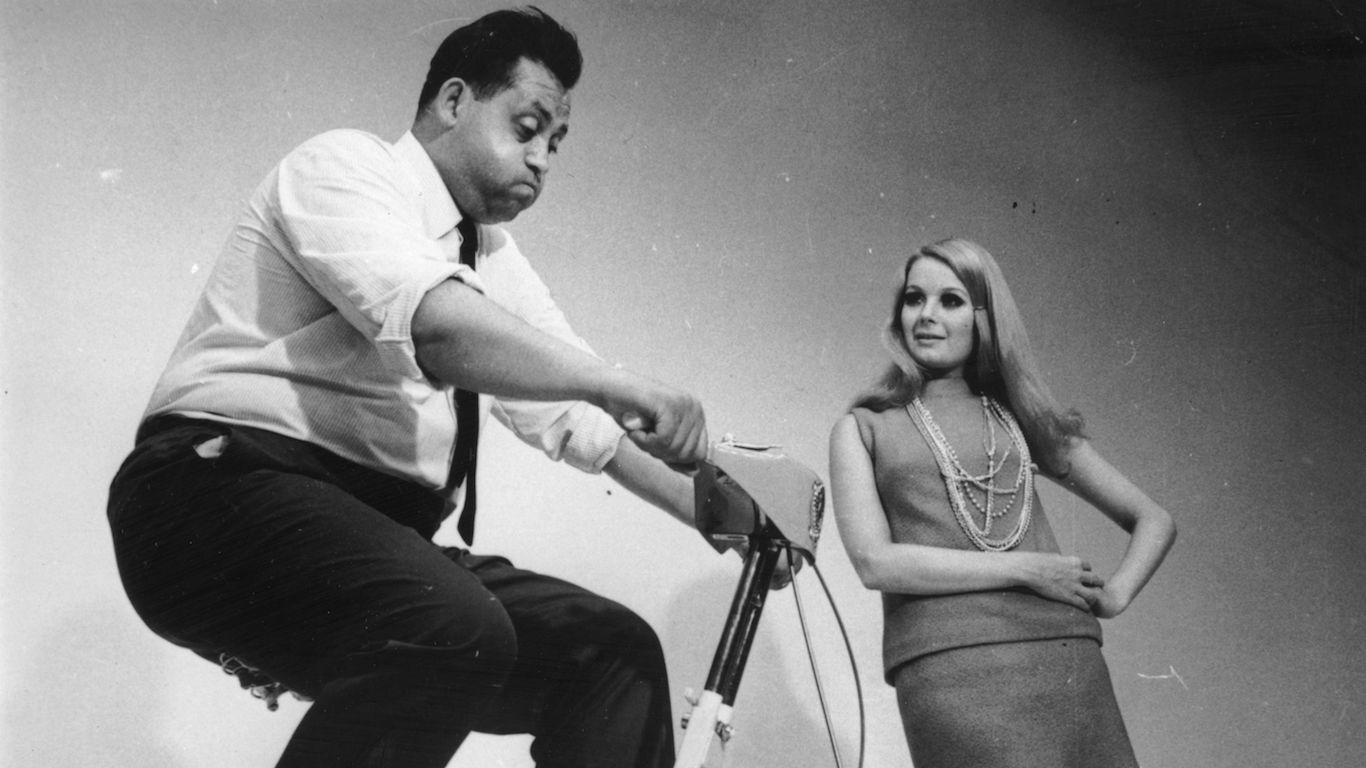
Published:
Last Updated:

For decades, many Americans have been obsessed with the idea of getting the perfect body. Each year, people strive to make themselves look like models and actors, or just to get in better shape.
Catering to these aspirations, new companies regularly come along promising the secret solution to getting in better shape without having to work out as much or strain as hard. Whether it is a new workout plan or a revolutionary piece of equipment, people are always willing to try out new fitness fads, hoping that they will provide the desired results.
Many of these fitness fads go in and out of style very quickly. Some are gimmick weight loss tricks, and others are scientifically proven to be ineffective. Some of these fads can actually get people in better shape — so long as they can adhere to the program. Many people have a hard time sticking to exercise routines for a variety of reasons — including a lack of time, energy, or perseverance to work out regularly. Many apps aim to help, and these are the best apps for achieving weight loss goals.
24/7 Tempo reviewed fitness magazines, newspaper articles, and online publications to determine the exercise fad the year you were born.
Click here to see the most popular exercise fad from the year you were born.
Click here to see our detailed findings and methodology.

Roller Derby, a sport in which designated players try to lap their opponents by any means necessary, was initially created during the Great Depression. It rose to prominence in the late 1940’s through the 1950s, when matches sold out Madison Square Garden and were even broadcast in the early days of television.
[in-text-ad]
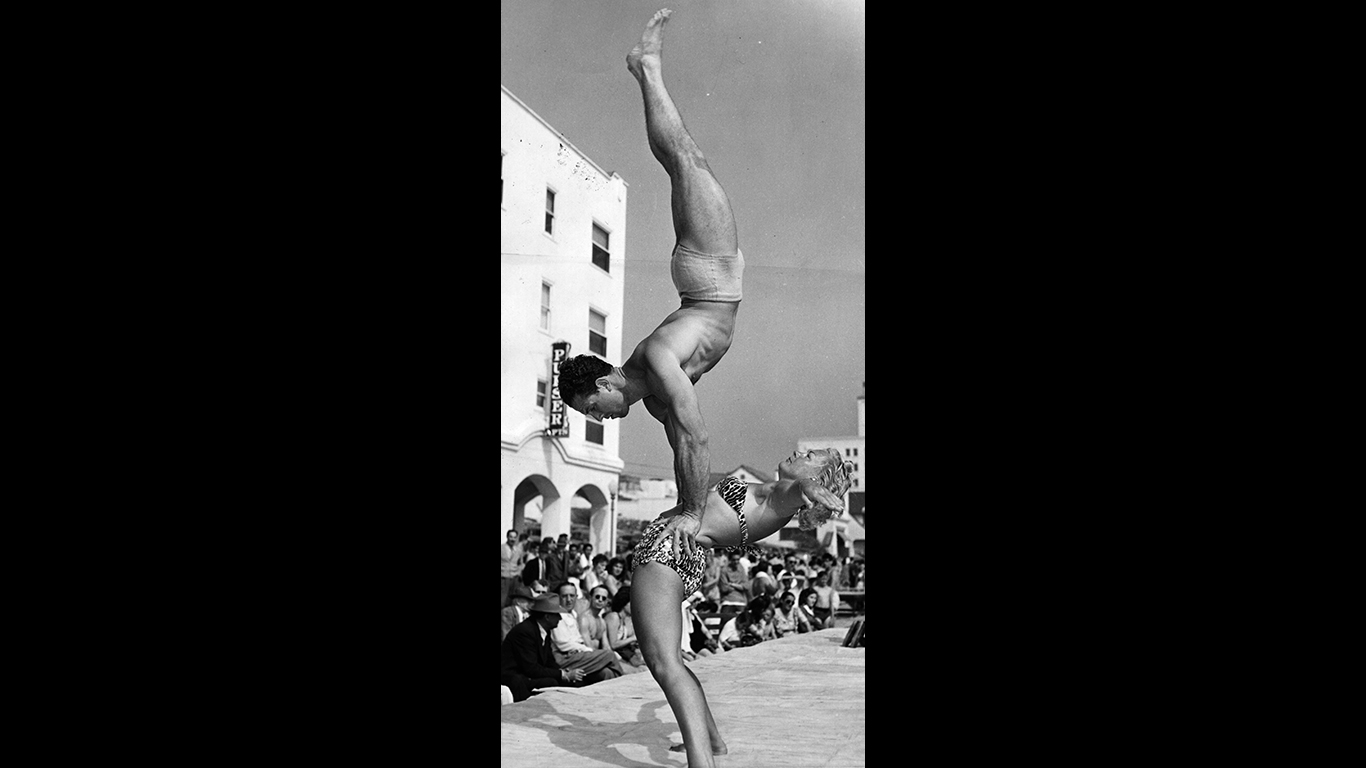
1957: Universal Gym Machine
Champion bodybuilder Harold Zinkin invented the Universal Gym Machine at a time when barbells and dumbbells were the only options for people looking to lift weights. The new contraption allowed several people to work out simultaneously, bringing weight training into the mainstream.
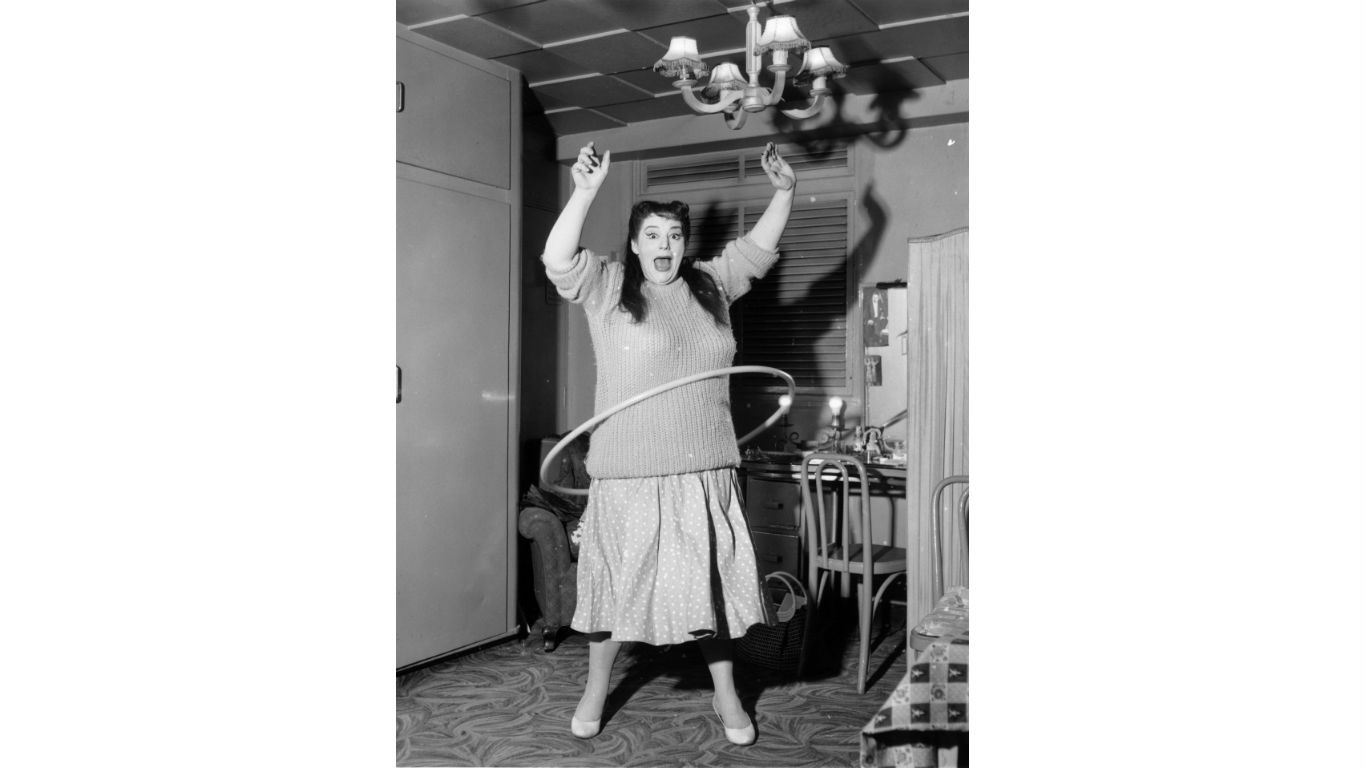
1958: Hula Hooping
Wham-O started making the hula-hoop in 1958 and it was an instant success. The simple circle, marketed as a new fitness tool to tone the midsection, sold an estimated 25 million units in its first four months.
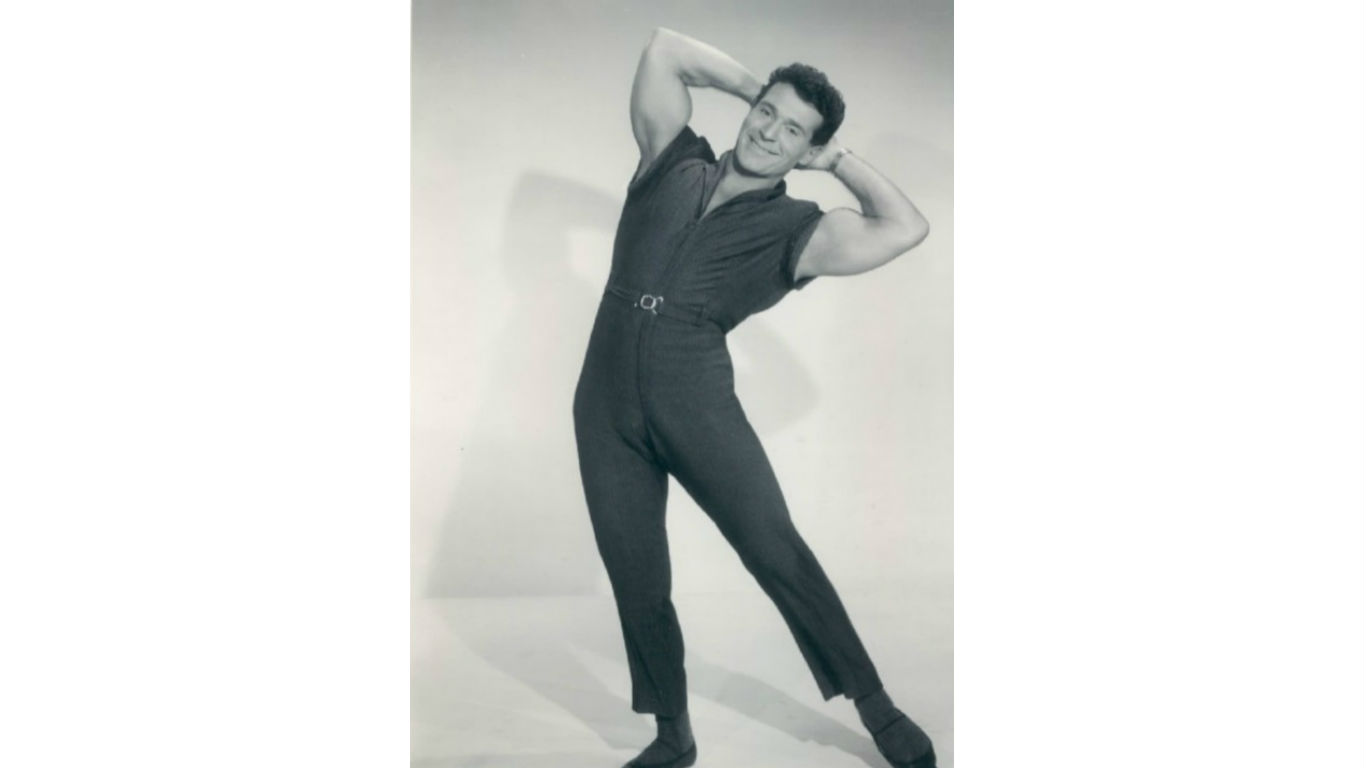
1959: The Jack LaLanne Show
Jack LaLanne made his name as a fitness icon, performing astonishing feats of strength well into his 60s. He first came into the spotlight with “The Jack LaLanne Show,” a fitness program that was broadcast nationally from 1959 until 1985.
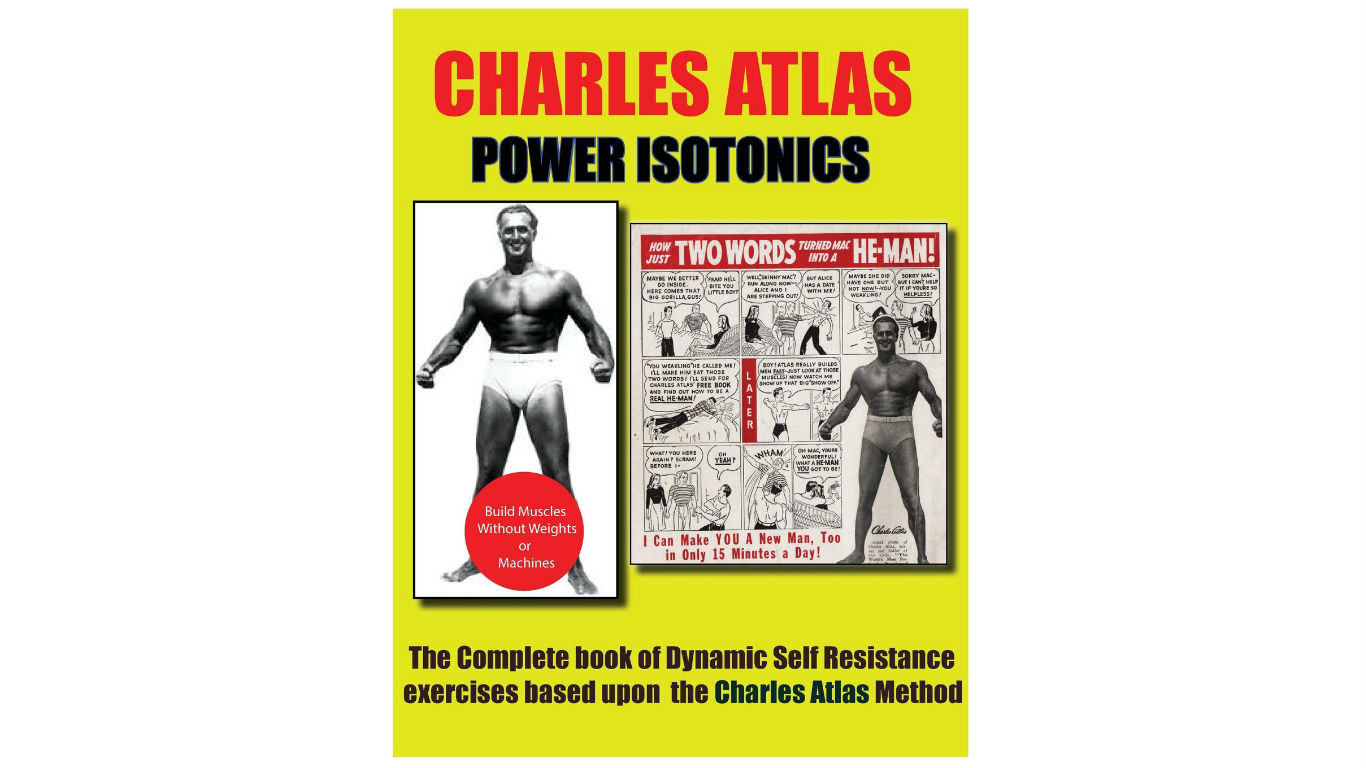
1960: Correspondence Muscle Courses
In 1960, muscular men like Charles Atlas and Joe Weider took out ads in comic books that encouraged scrawny men and boys to follow their training regimen to avoid being bullied. Atlas promised his 12-part course would make comic book readers look more like the heroes they read about in 90 days.

1961: Debbie Drake’s Easy Way to Perfect Figure and Glowing Health
Debbie Drake’s fitness book was an early example of exercise tips pandering to women. In it, she told women how to work out their legs while flirting on the phone, how to work their arms while brushing their hair, and how to slim down their faces by sucking in their cheeks.

1962: U.S. Physical Fitness Program
President John F. Kennedy’s U.S. Physical Fitness Program was part of a targeted approach to get American children into better shape. Roughly 250,000 school children took part in the program of simple stretches, cardio exercises, and calisthenics. Many of them performed much better on physical fitness courses after participating in the program.
[in-text-ad-2]
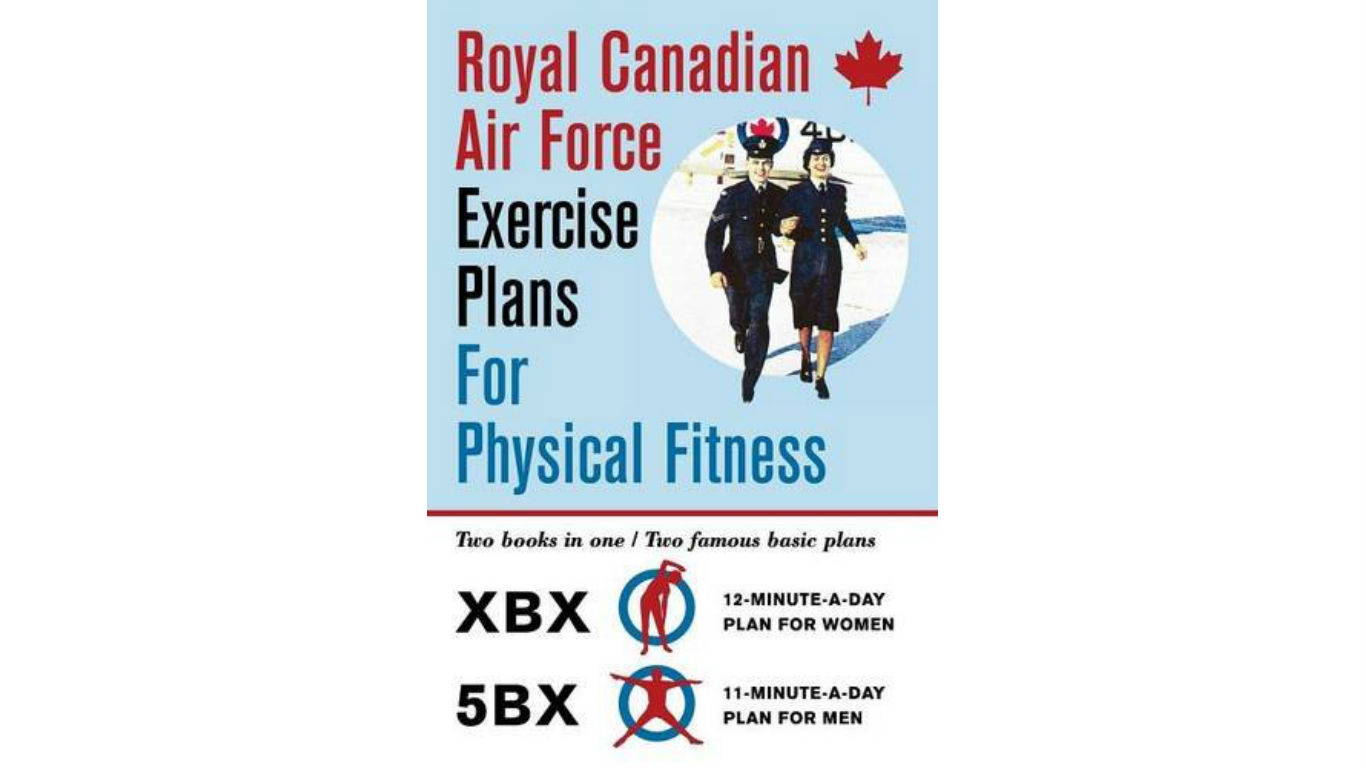
1963: 5BX
5BX, short for five basic exercises, was initially devised as a way to keep Royal Canadian Air Force pilots in shape when workout equipment was unavailable. The simple series of exercises took just 11 minutes and became a huge hit. It sold close to 23 million copies in the 1960s and 1970s.
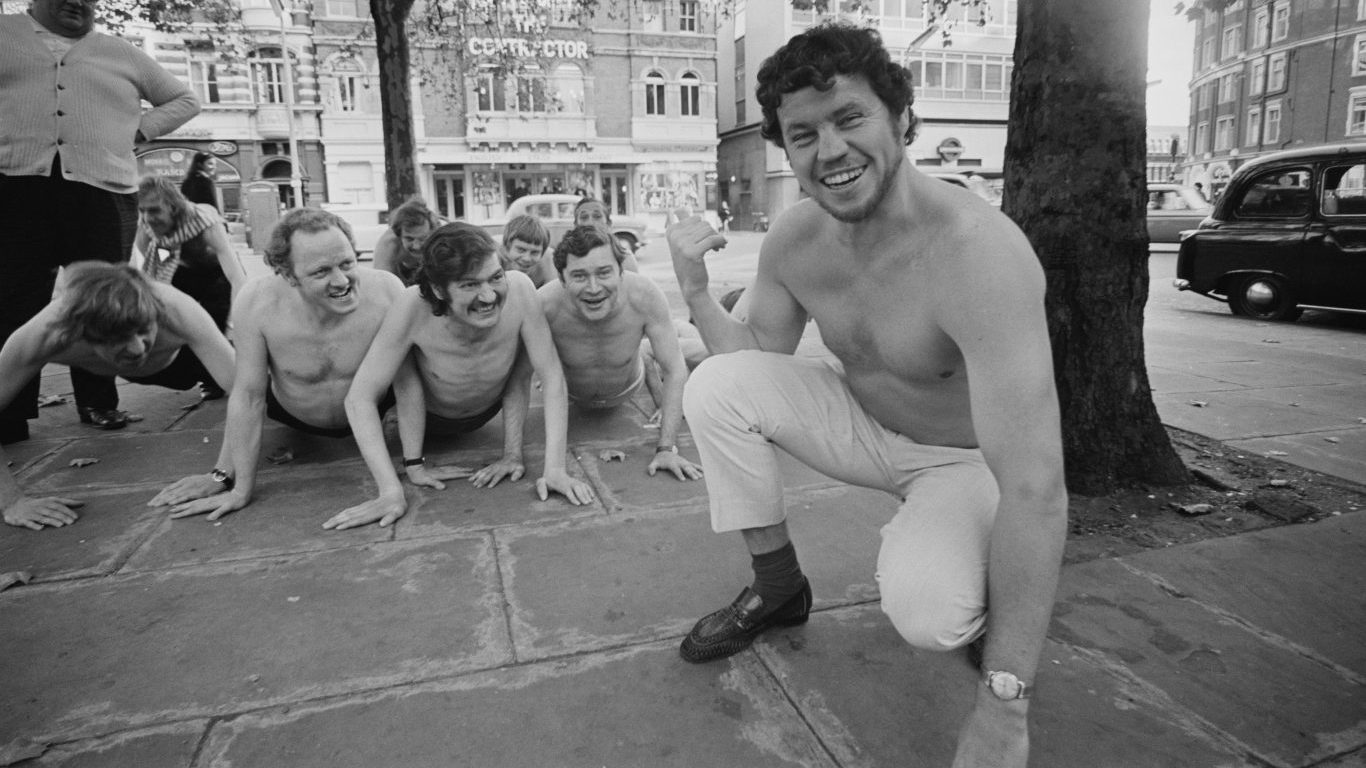
1964: Calisthenics
Calisthenics is just a fancy name for training done without the aid of any workout equipment or weights. Also known as “bodyweight training,” calisthenics uses simple exercises like pushups and jumping jacks to improve strength and endurance. Jack LaLanne helped popularize the practice in the 1960s.

1965: Stationary Bike
The earliest known stationary bike precursor was invented in 1796. But the stationary bike did not really catch on as an exercise fad until 1965, when Schwinn released the Exerciser, an exercise bike designed for the home. Stationary bikes were a hit and are still a mainstay in gyms across the country.
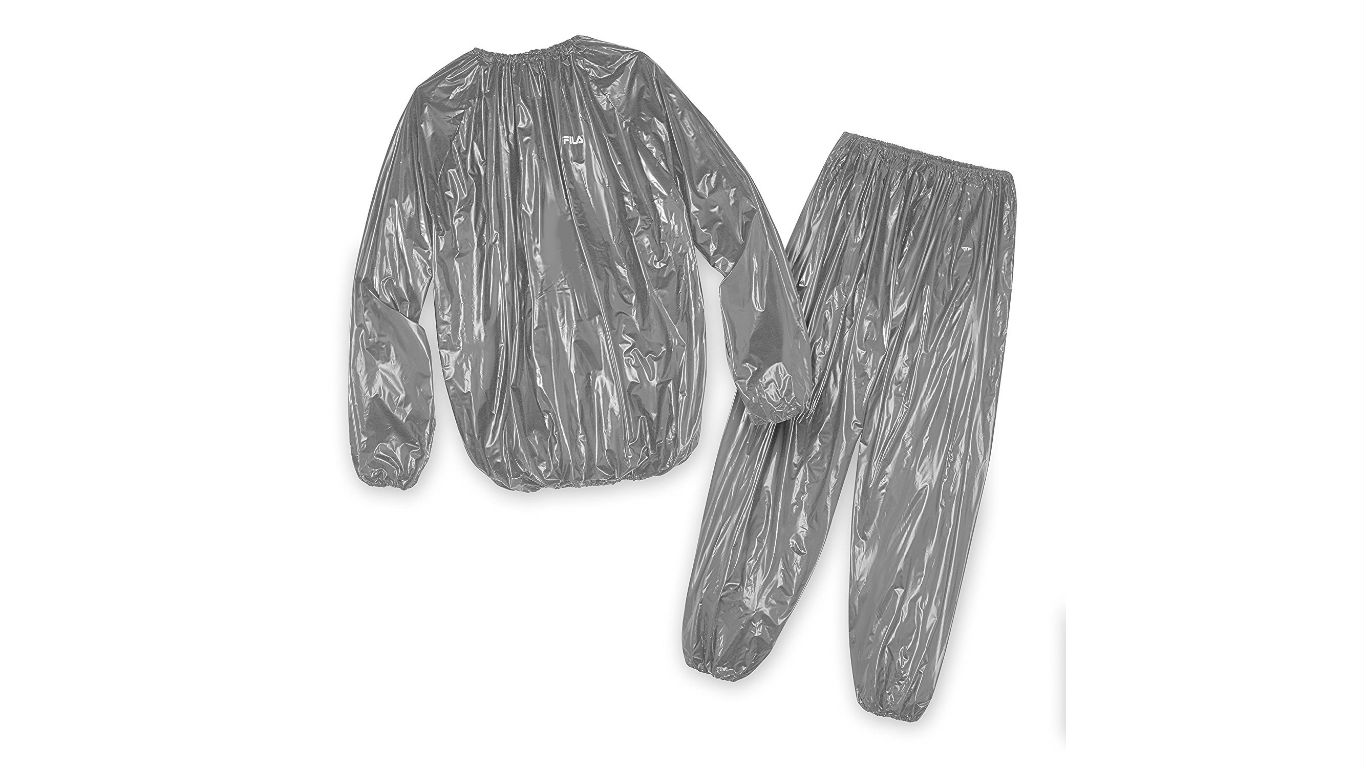
1966: Sauna Suit
Sauna Suits are one of many fitness items that promise to slim down owners without them having to work out at all. The suits simply make the wearer hot and sweaty and do not effectively help them lose weight. The suits dehydrate the body, and any weight lost from sweating will come back once the user drinks water.
[in-text-ad]

1967: Vibrating Belts
In advertisements, the makers of vibrating belts promised their devices would jiggle a person’s belly, legs, or rear end and vibrate the fat away. The machines were popular in the 1950s and 1960s, but sales flopped when scientists found out that they did not actually help with weight loss or shrink down any parts of a person’s body.
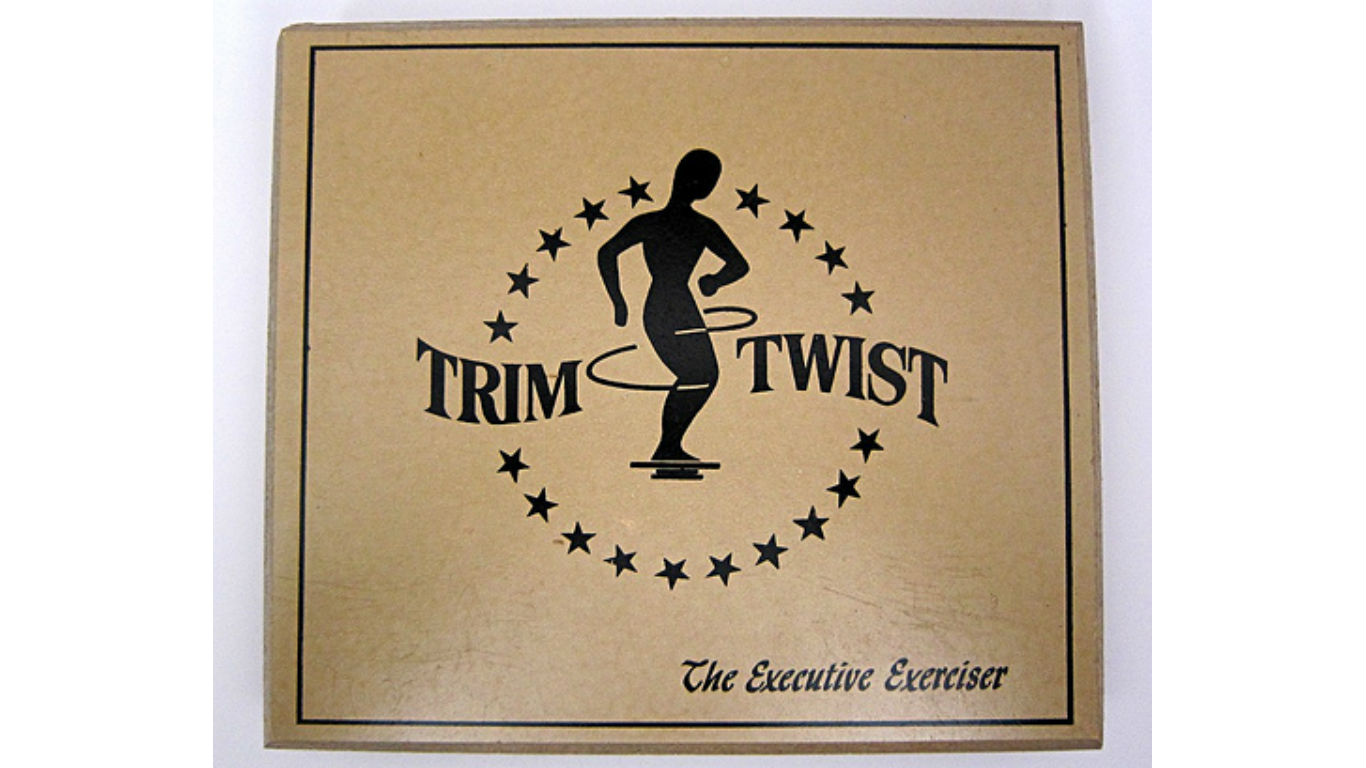
1968: Trim Twist
Years after the Twist was a dance craze in the U.S., it became a workout fad. The Trim Twist was a simple board on a metal turning mechanism that invited users to twist their hips back and forth as a way to work out their core, backside, and legs.

1969: Stretch Classes
Stretch classes first became a workout trend for women in the 1910s, though the technique often left something to be desired as exercise research was relatively new. Stretch classes came back into popularity in the late 1960s, when gyms offered their services to secretaries and other working women.
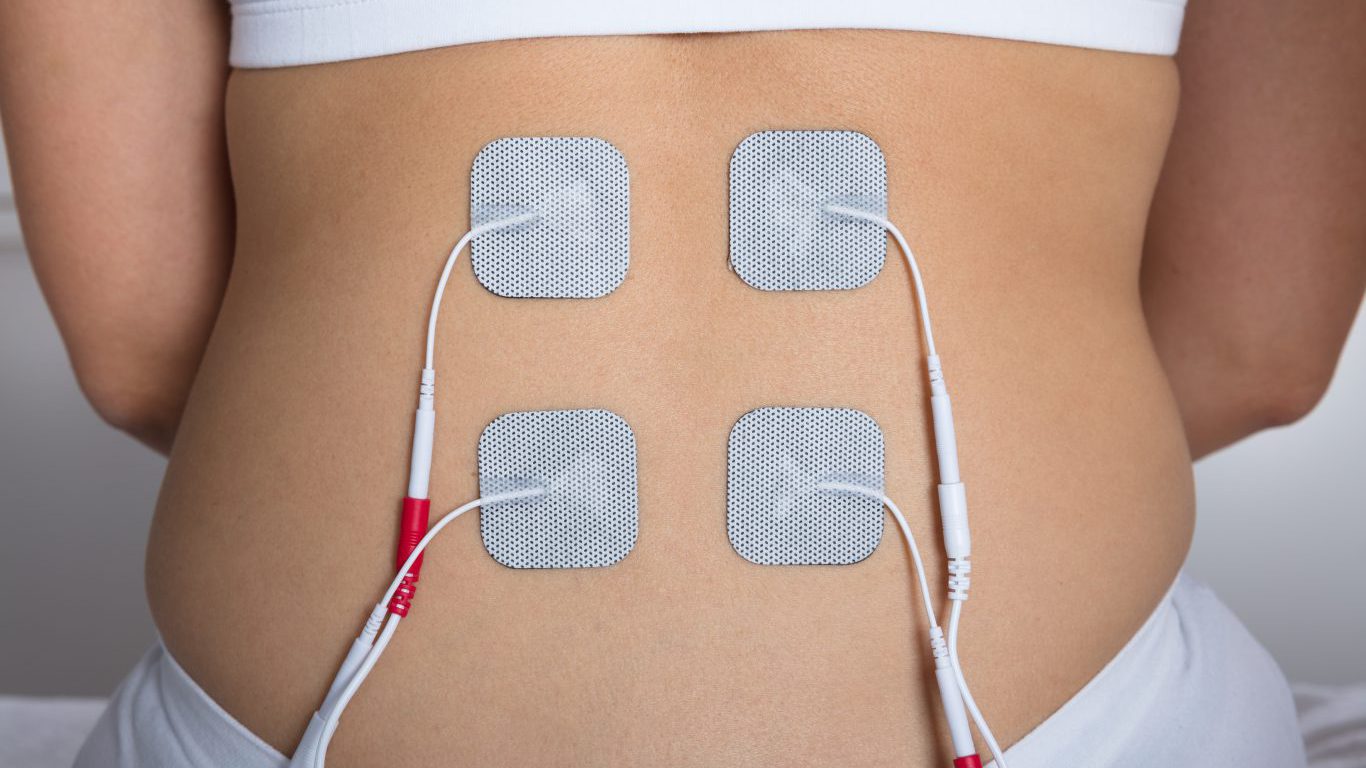
1970: Electric Muscle Stimulation
There were a litany of fitness products that made the dubious claim that people could shed unwanted fat by simply attaching a pad to their body that sent electric pulses into their problem areas. Ads promised that users could “trim down without dieting,” though they likely did not deliver on that promise.

1971: Leather n’ Lead Bracelets
Before Arnold Schwarzenegger was a movie star, he appeared in an advertisement for Leather n’ Lead bracelets. The accessories weighed down the wearer’s arm, turning any activity into an arm workout.

1972: Nautilus Equipment
Nautilus was established by Arthur Jones. It created some of the earliest mass-produced resistance training workout machines and helped popularize the training style in the 1970s.
[in-text-ad-2]

1973: Slender Bender
Though it may look like a cot or a lawn chair, the Slender Bender was marketed as a way for women to tone their midsections and legs without having to leave the house.

1974: Air Shorts
Aside from making you look like you were part balloon animal, Air Shorts were said to massage your legs and waist, helping you trim-down. The shorts might have lightened wallets, but likely did little to meaningfully reduce user’s waistlines.
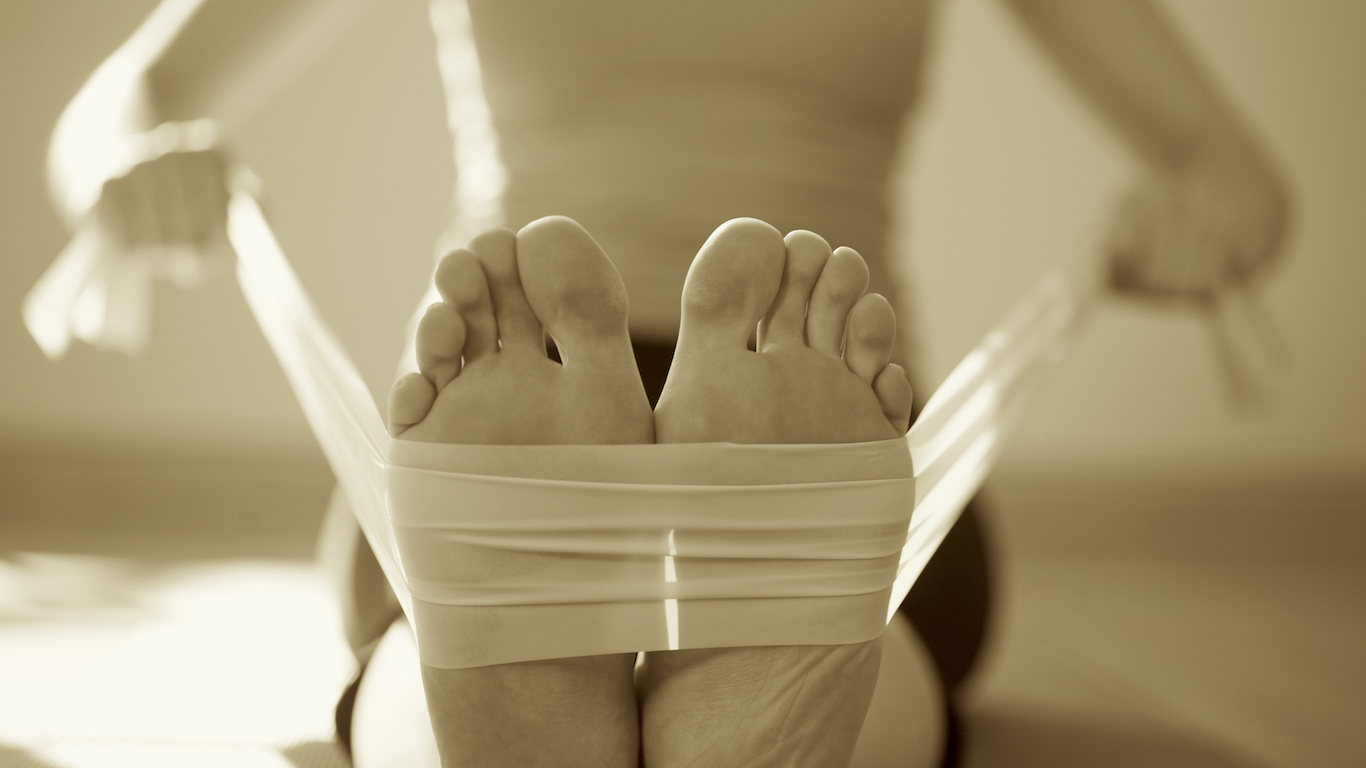
1975: Leg Beauty Kit
The Leg Beauty Kit was one of the earliest example of a widely popular fitness product using rubber resistance bands. The kit was marketed to women as an inexpensive way for them to slim and tone their legs.

1976: Speed Bag Training
It is likely not a coincidence that speed bag training became a popular way to get exercise the same year that the movie “Rocky” came out. Many Americans joined boxing gyms to tone their arms and abs in the hopes of getting a body like Sylvester Stallone.
[in-text-ad]

1977: Bodybuilding
In 1977, a documentary called “Pumping Iron” introduced much of the world to a young Austrian bodybuilder named Arnold Schwarzenegger. In addition to turning Arnold into a movie star, it also made bodybuilding a more mainstream pursuit.
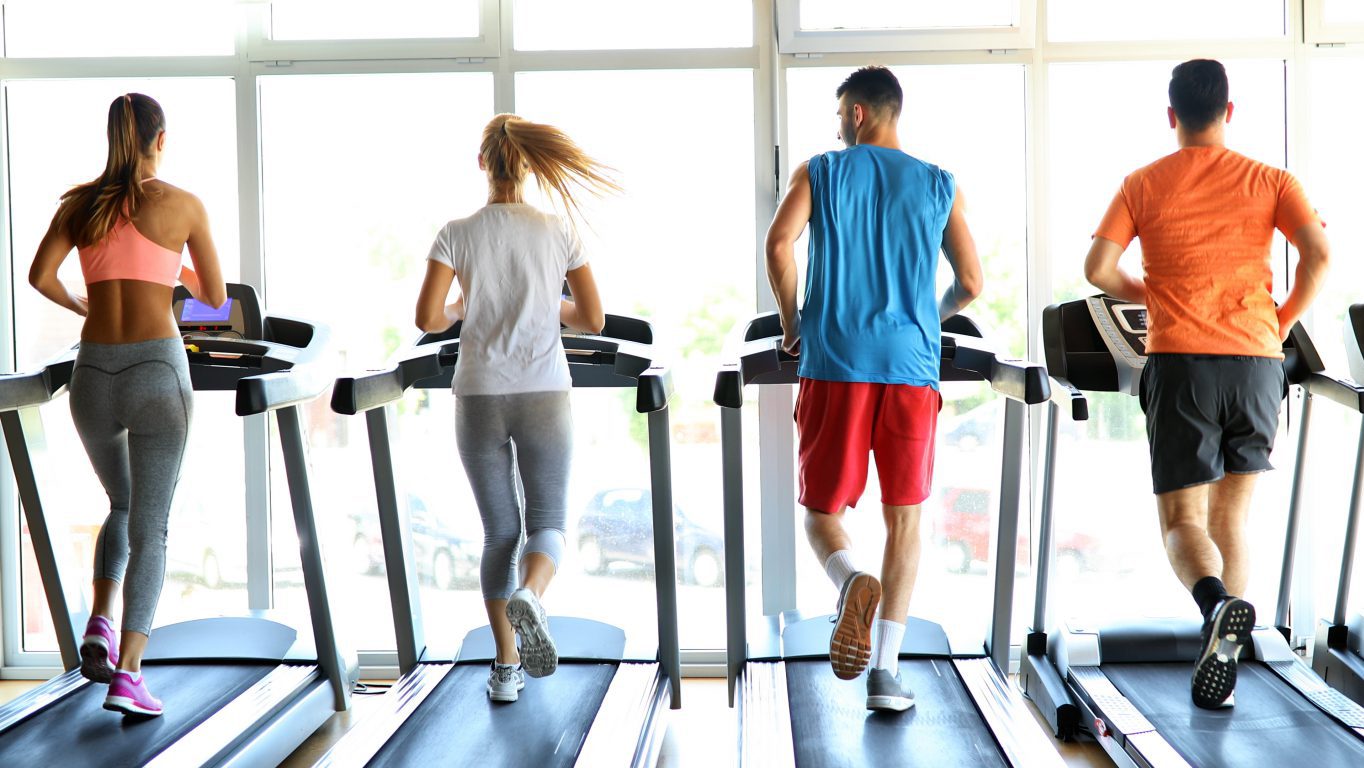
1978: Treadmills
In the 1950s, treadmills were used primarily as a way for doctors to stress test their patients. But engineer William Staub saw them as a way to get people to go for a run without leaving their house. He created and mass produced treadmills in the 1970s, drastically reducing the price and making them an exercise mainstay to this day.

1979: Roller Skating
Roller skating has been a fun recreational activity for decades, but it caught on as an exercise fad in 1979 after Olivia Newton-John told People magazine she used the sport to keep her legs toned.

1980: Gravity Boots
After Richard Gere’s character in 1980’s “American Gigolo” used Gravity Boots as a way to work out while upside down, the suspension devices boomed in popularity. While it may look a bit silly, hanging upside down actually has some medical benefits, including relieving certain painful spinal conditions.
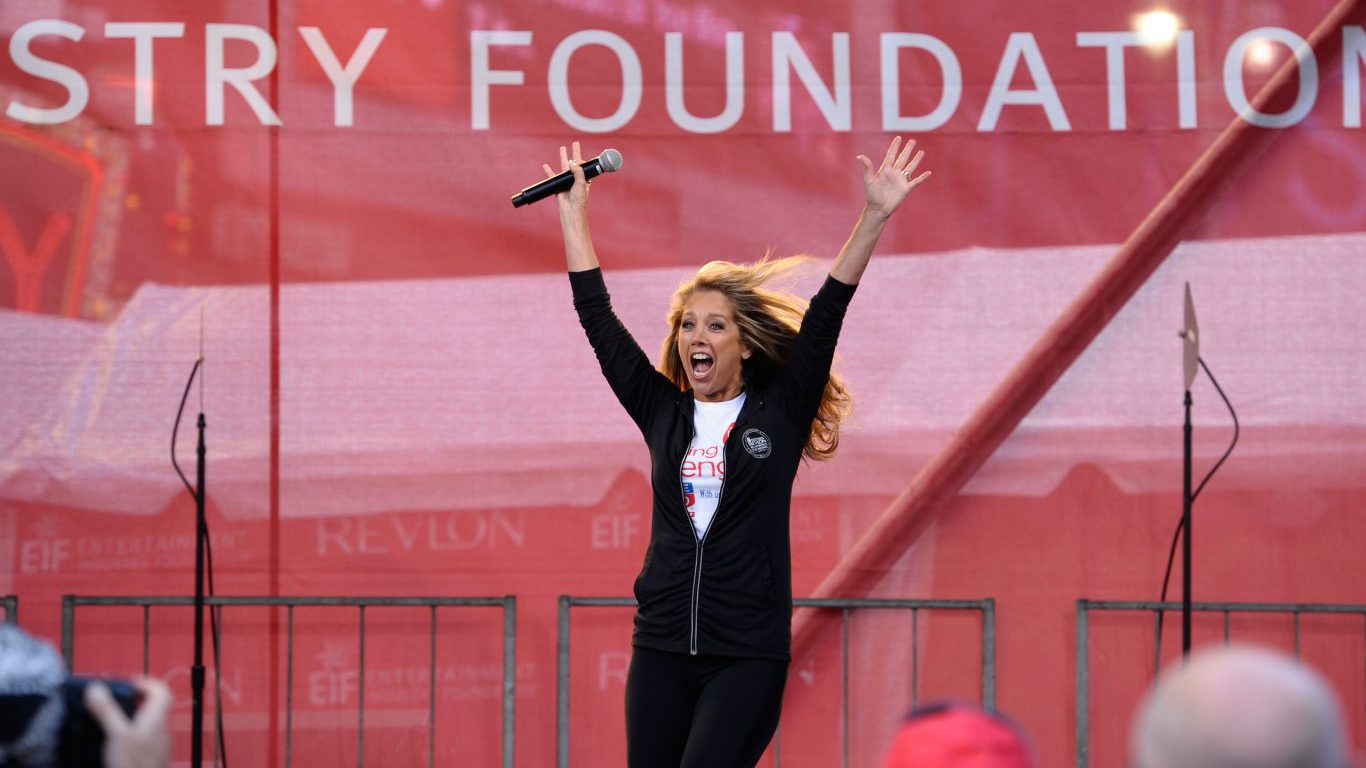
1981: Denise Austin
Denise Austin led the wave of celebrity workout gurus who appeared on television and in their own instructional workout videos in the 1980s. She got her big break in 1981 when she appeared on “The Jack LaLanne Show.”

1982: Jane Fonda’s Workout
In 1982, Jane Fonda was a huge movie star. She had won two Academy Awards and appeared in classic films like “Barbarella.” Her fame helped turn her “Workout” series of videos into smash hits. Women across the country used the workout tapes to get in shape.
[in-text-ad-2]
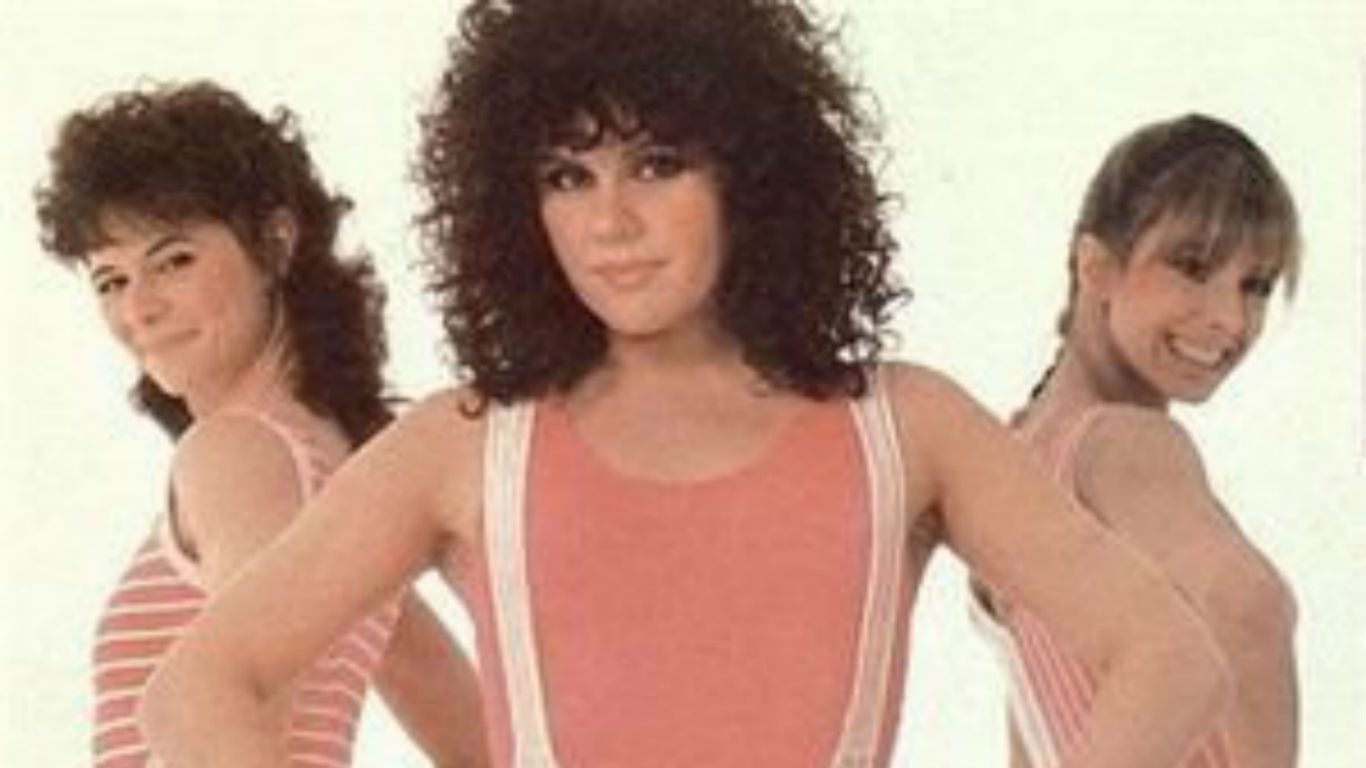
1983: 20 Minute Workout
The “20 Minute Workout” aired on television for just a few years, but its initial run and reruns allowed anyone with a TV set to get in a quick workout without leaving their home.

1984: Jazzercise
There may be nothing more quintessentially 80s than Jazzercise. The workout combined bright leotards and upbeat dance music with aerobic exercise. The VHS tapes sold well after Jazzercise was featured in the 1984 Los Angeles Olympics.

1985: Personal Training
As the U.S. economy began to snap back from a recession in the mid 1980s, people had more money to spend on themselves. Many Americans started requesting one-on-one sessions with fitness experts, leading to the rise of personal trainers.

1986: BowFlex Home Gym
The BowFlex Home Gym burst onto the fitness scene in 1986, offering consumers a new option to use resistance to train their muscles. This made the BowFlex less bulky than other exercise equipment.
[in-text-ad]

1987: Buns of Steel
“Buns of Steel” became a must-own VHS tape for anyone in the 1980s looking to tone their backside. Though it became a pop culture punchline, the video was widely popular. It also included some arm and core workouts as well.

1988: Sweatin’ to the Oldies
Richard Simmons may not look like the typical fitness expert, but his “Sweatin’ to the Oldies” videos are a certified phenomenon. Simmons led upbeat aerobic exercises to classic pop music hits. The video series reportedly sold over 20 million copies.

1989: Abdominizer
The Abdominizer was a simple device designed to help people sculpt their abs. It became a successful product in the late 1980s thanks to a series of infomercials in 1988. In the following years, consumers bought over 3 million Abdominizers.
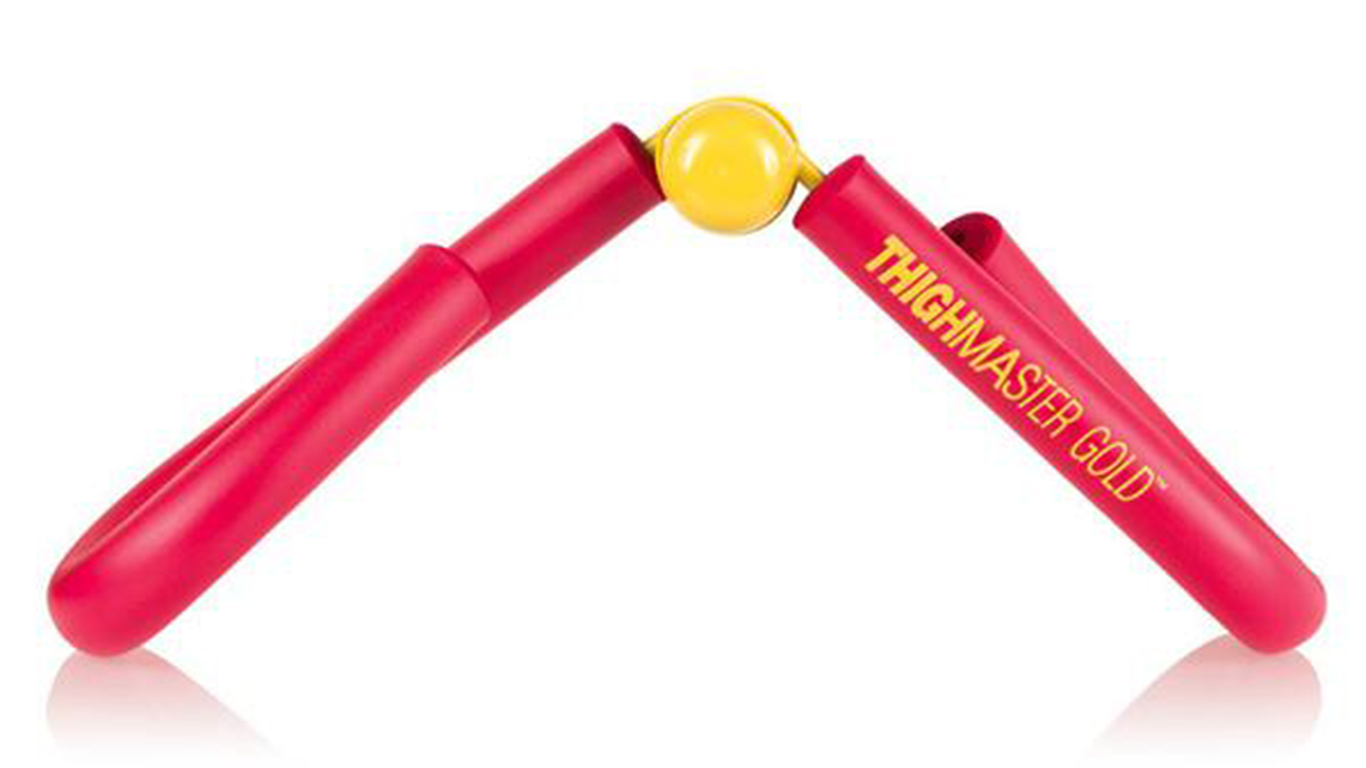
1990: ThighMaster
The ThighMaster proved the power of the infomercial. The simple tool was designed to tone and firm the thighs and legs through a series of simple exercises. The ThighMaster made over $100 million, largely thanks to spokesperson Suzanne Somers.
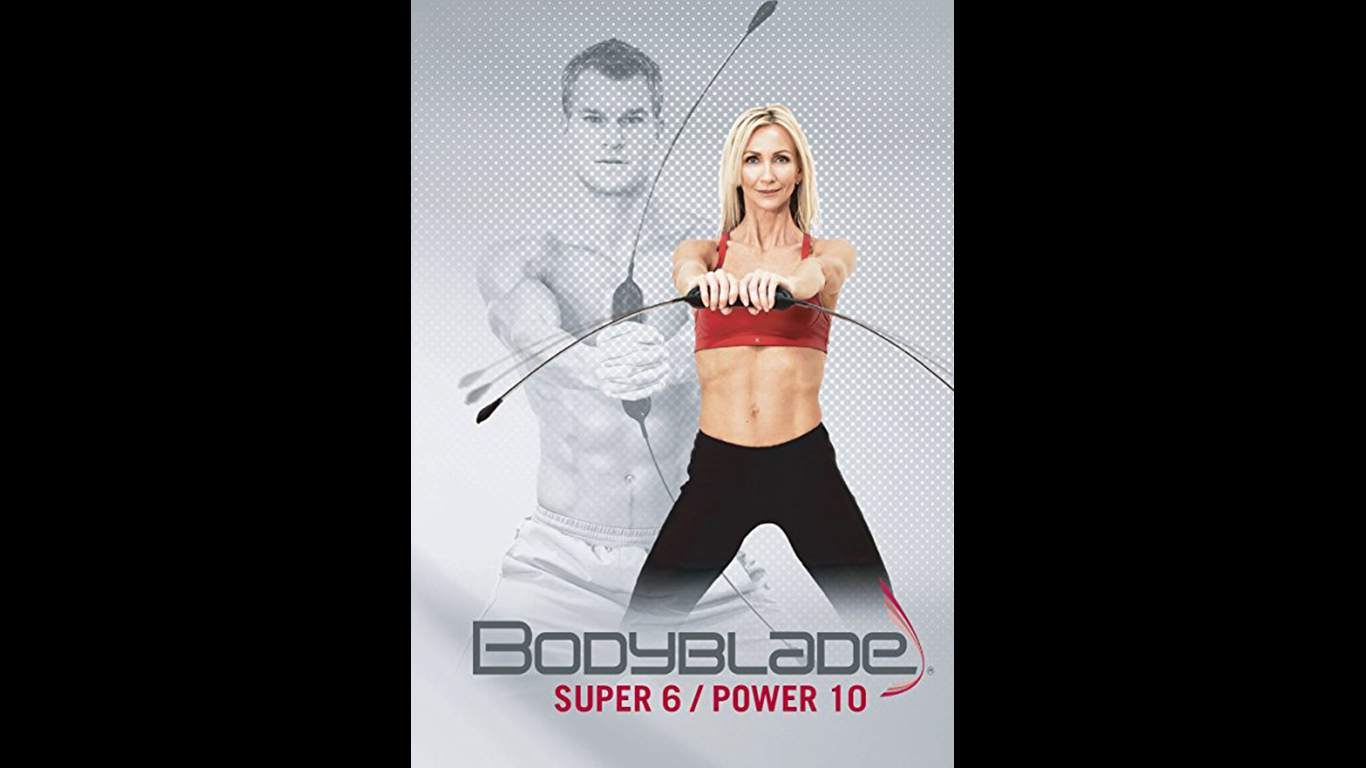
1991: BodyBlade
The BodyBlade was initially designed by a physical therapist as a rehabilitation tool. Users wiggle the flexible staff back and forth to tone arm and core muscles. Initially released in 1991, 1.5 million BodyBlades have been sold since.

1992: Cindy Crawford: Shape Your Body
Supermodel Cindy Crawford was world famous for looking great in 1992, so it is no surprise that people would want her workout. She starred in a series of workout tapes, starting with the “Cindy Crawford Shape Your Body Workout.”
[in-text-ad-2]

1993: NordicTrack
The NordicTrack cross-country skiing simulator was invented in the garage of Edward Pauls in Chaska, Minnesota in 1975. Over time, the invention became more and more popular, earning $378 million in sales in 1993.

1994: The Ab Roller
Many fitness fads focus on getting rock-hard abs. The most successful of them may be the Ab Roller. The product supports the user’s head while they do crunches, and brought in $1 billion in sales.

1995: 8 Minute Abs
“8 Minute Abs” marketed itself as the perfect option for people who want a six-pack but do not want to spend a lot of time getting it. The video demonstrated nine exercises designed to sculpt the midsection in less time than it would take to drive to the gym.
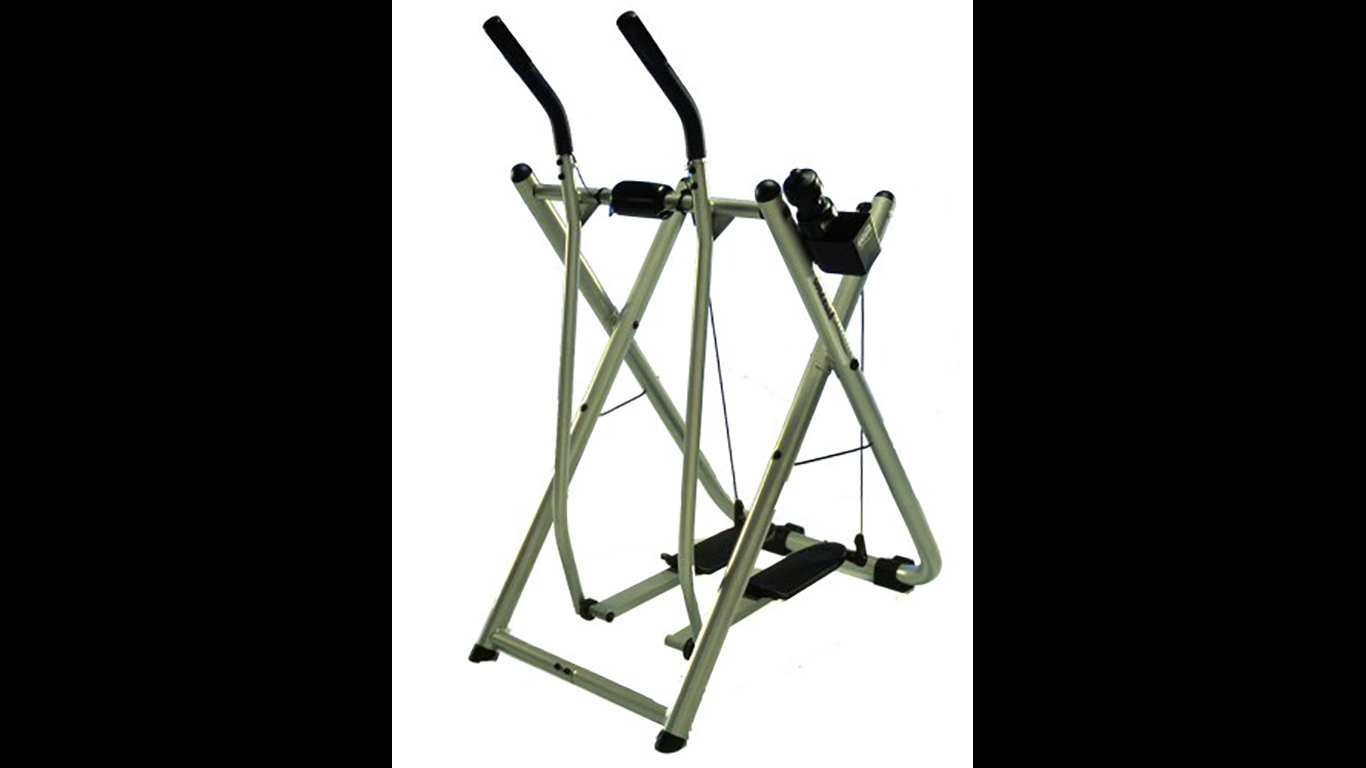
1996: Gazelle Freestyle
The Gazelle Freestyle is yet another piece of workout equipment that rose to national prominence because of its infomercials. The machine is billed as a way to increase endurance without being too intense for people with less experience working out. It has received mixed reviews from users.
[in-text-ad]
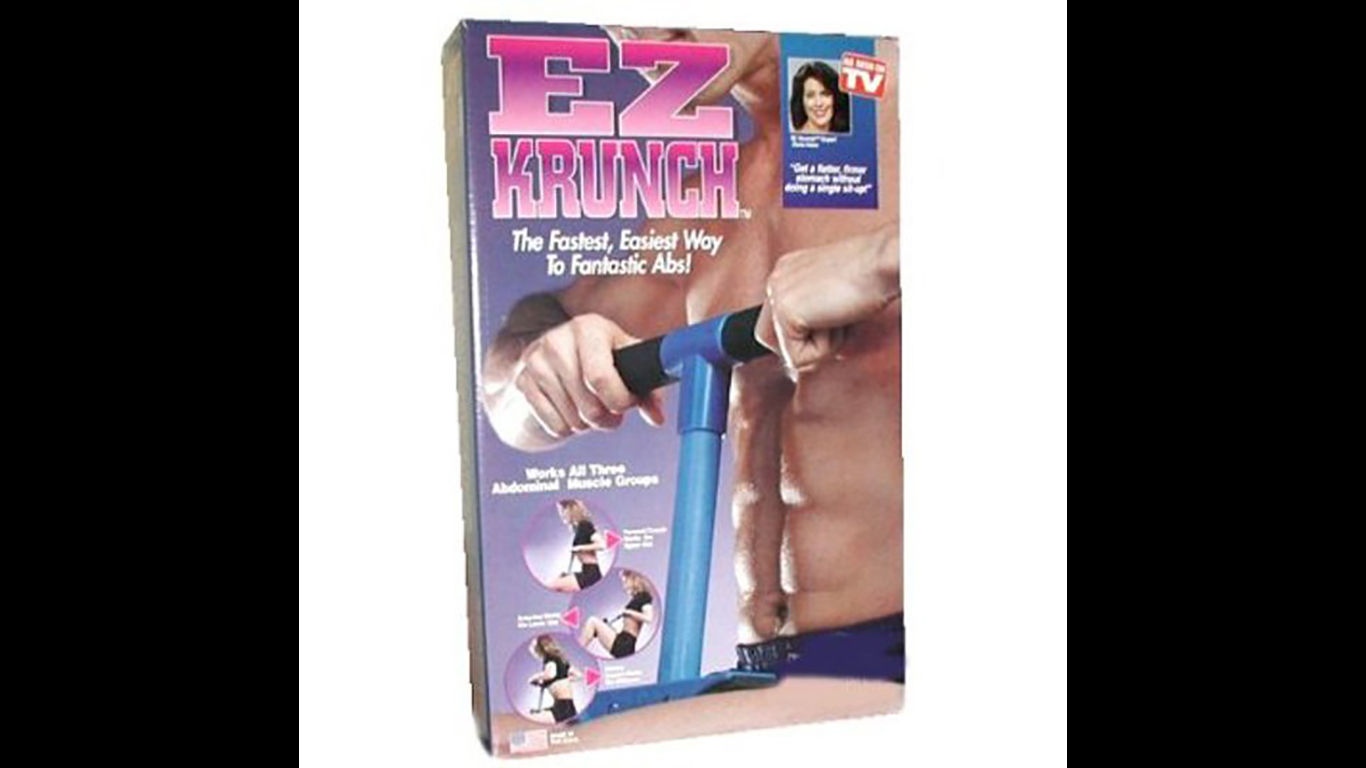
1997: EZ Krunch
EZ Krunch was one of a litany of products constantly advertised on television that promised to deliver perfect abs to those who used it. The product, which resembled bicycle handlebars, was part of what the Wall Street Journal dubbed “The Ab Wars” between different core workout tools.
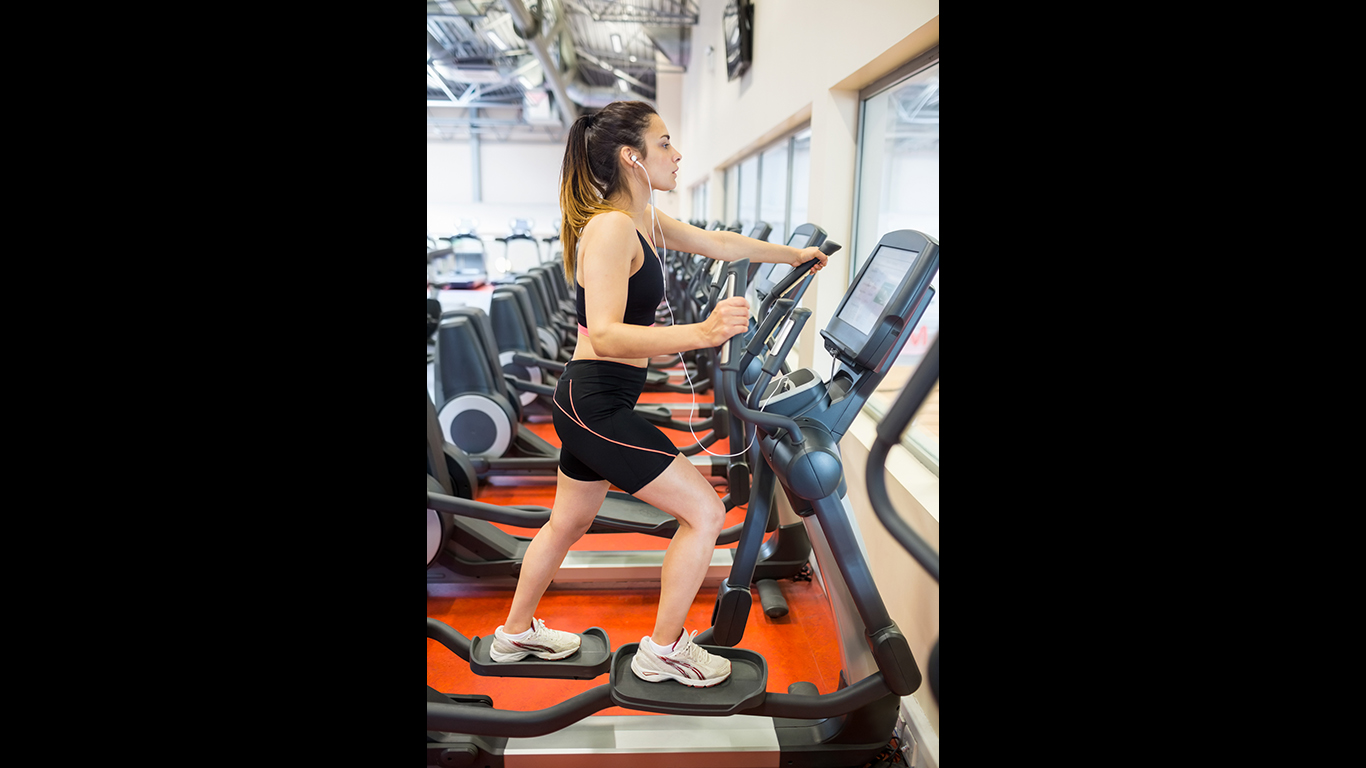
1998: Elliptical
Now a staple in gyms nationwide, the elliptical burst onto the health and fitness scene in the 1990s. The elliptical provided people a way to exercise that is similar to running without straining the feet and joints the way that running on a treadmill can.
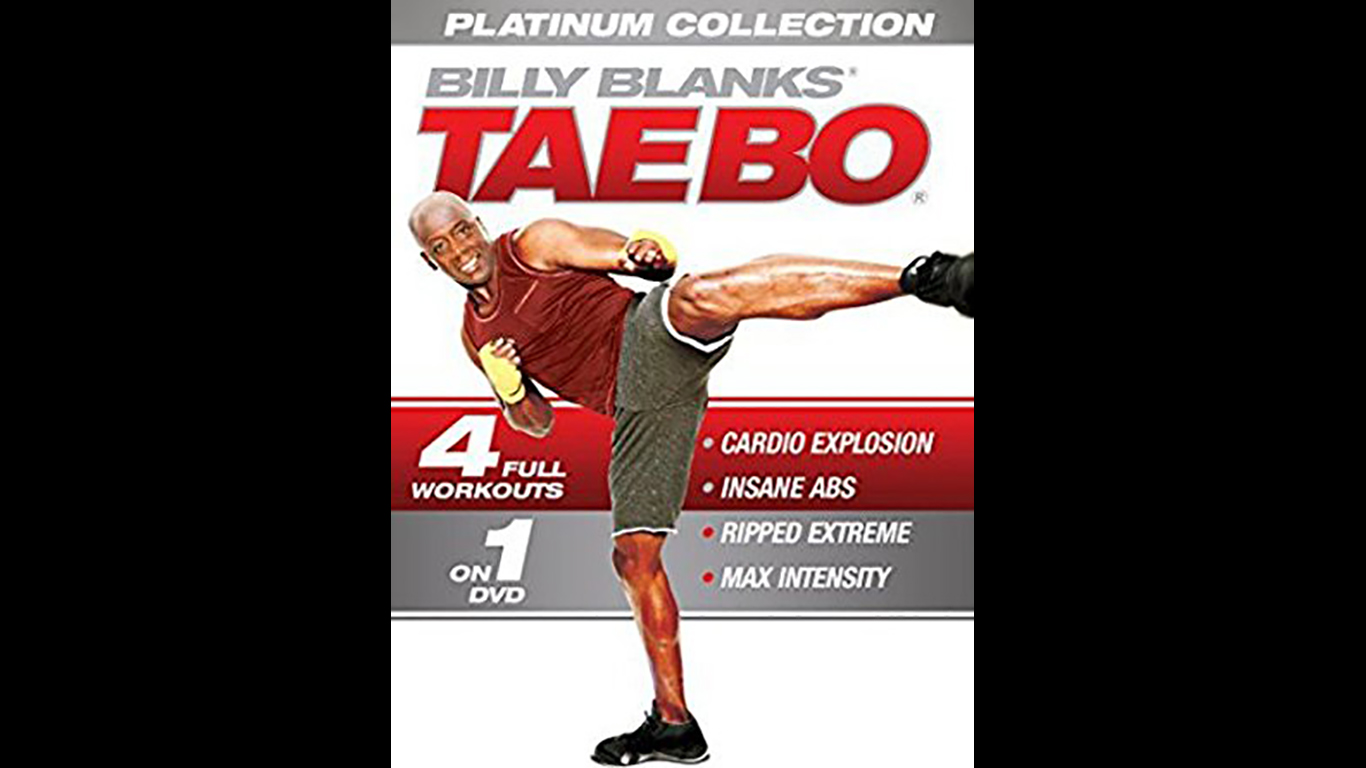
1999: Tae Bo
In 1999, the most popular home video sold was not a big summer blockbuster — it was “Tae Bo.” Tae Bo, which stands for Total Awareness of Excellent Body Obedience, was a video series that combined martial arts with aerobics for a comprehensive workout.

2000: Pilates
Pilates is a series of coordinated exercises designed to strengthen a person’s core. The practice was created by Joseph Pilates, a German immigrant who opened the first pilates studio in New York City. It initially caught on with ballet dancers, but later expanded to a wider audience.
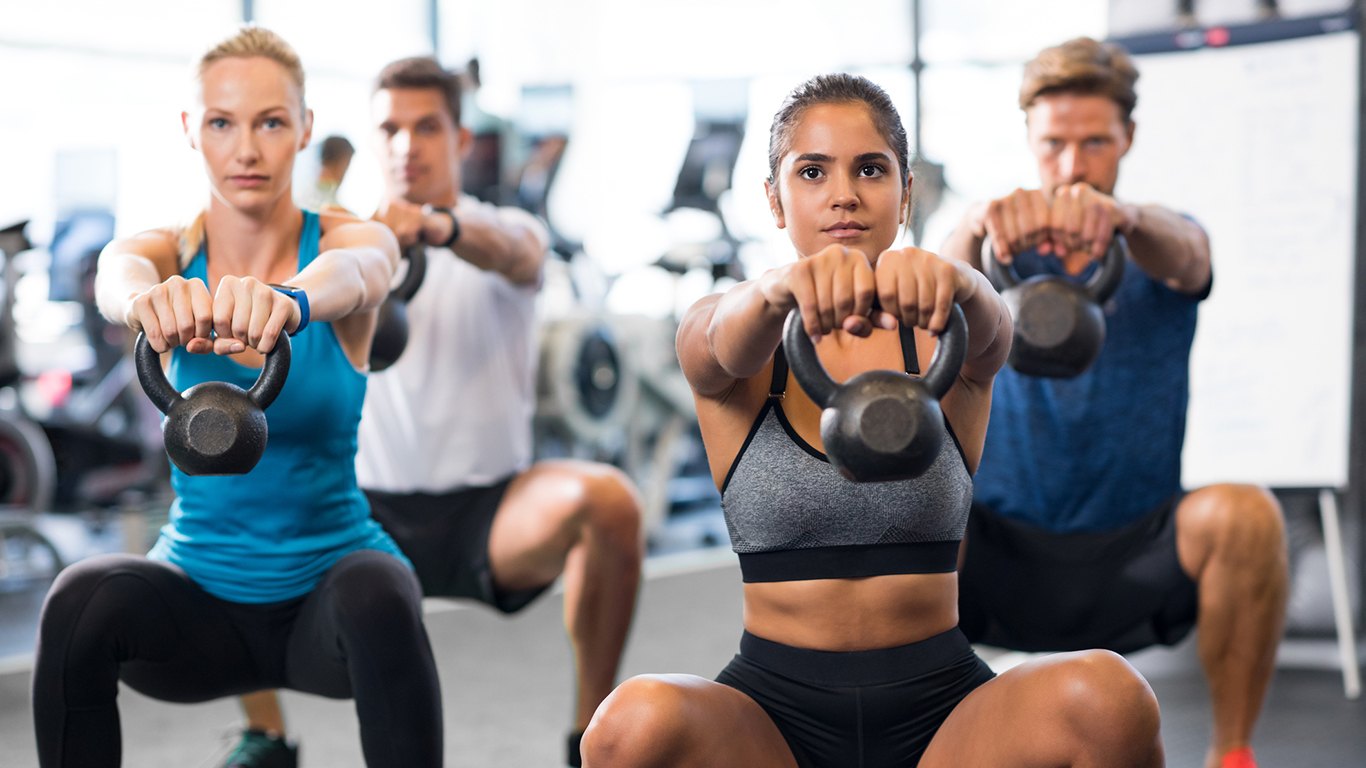
2001: Kettlebell
Kettlebells have been used as weights for strength training and showing off for over a century. Circus strongmen often used kettlebells to demonstrate their power. The practice came back into popularity thanks to Russian fitness expert and former Spetsnaz trainer Pavel Tsatsouline.
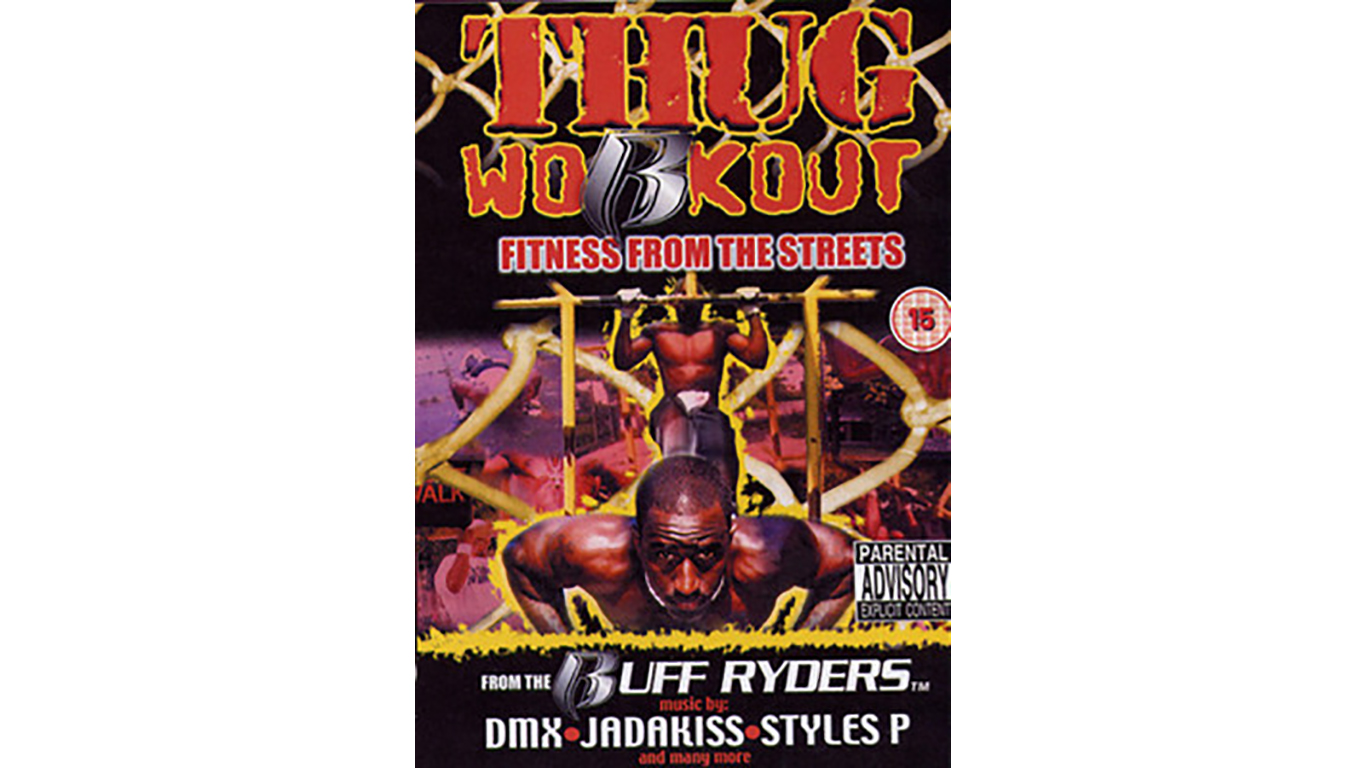
2002: Thug Workout
When rapper DMX was at the height of his fame in 2002, he and his group the Ruff Ryders decided to stop, drop, and open up shop in their very own workout video. The video emphasized that people could use everyday objects to stay in shape instead of using pricey workout equipment.
[in-text-ad-2]

2003: P90X
P90X was a successful set of workout DVDs known for their intensity. It consisted of a dozen workouts, many of which lasted for more than an hour. P90X used a concept called “muscle confusion” to avoid plateaus and keep the body in shape.

2004: Yoga
Yoga originated in India thousands of years ago. In 2004, millions of people picked up the discipline, pushing its user total to 15 million people.

2005: Barre
Barre is a ballet-inspired workout that can be traced back to 1959. It was initially used as a way to keep dancers limber and in shape. In 2005, the fitness fad saw a major resurgence and classes are still held across the county to this day.

2006: TRX Suspension Training
TRX Suspension Training was initially designed by Navy SEAL Randy Hetrick in 1997. It utilizes specialized resistance bands to target muscles from head to toe. Hetrick sold the workout gear out of his car in 2004. Just two years later, the TRX Suspension System was available worldwide.
[in-text-ad]
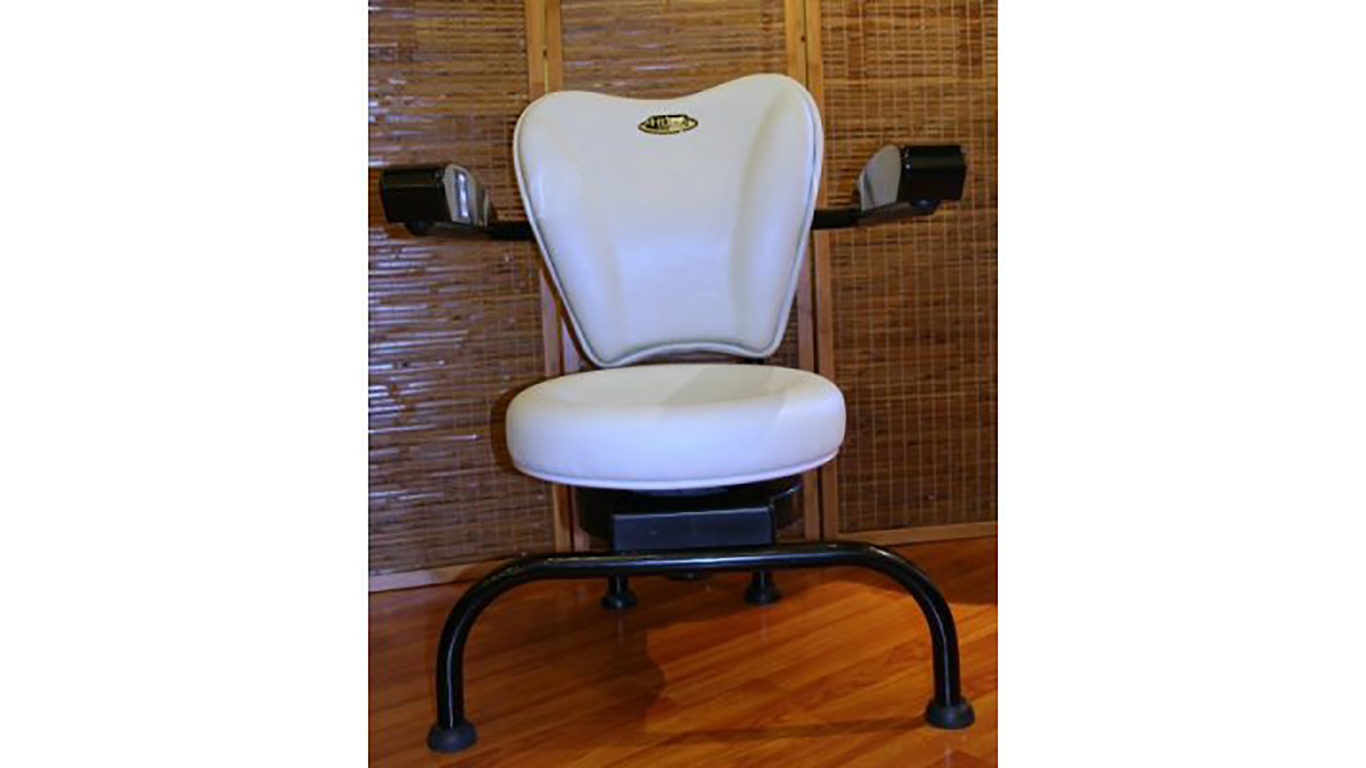
2007: Hawaii Chair
The Hawaii Chair is yet another product that promises Americans an easy fitness routine via its infomercials. The chair gets its name because it swivels in a hula motion that supposedly burns calories and works your midsection. However, it may not be effective: Men’s Journal included the Hawaii Chair on its list of the “Worst Fitness and Weight Loss Gimmicks.”
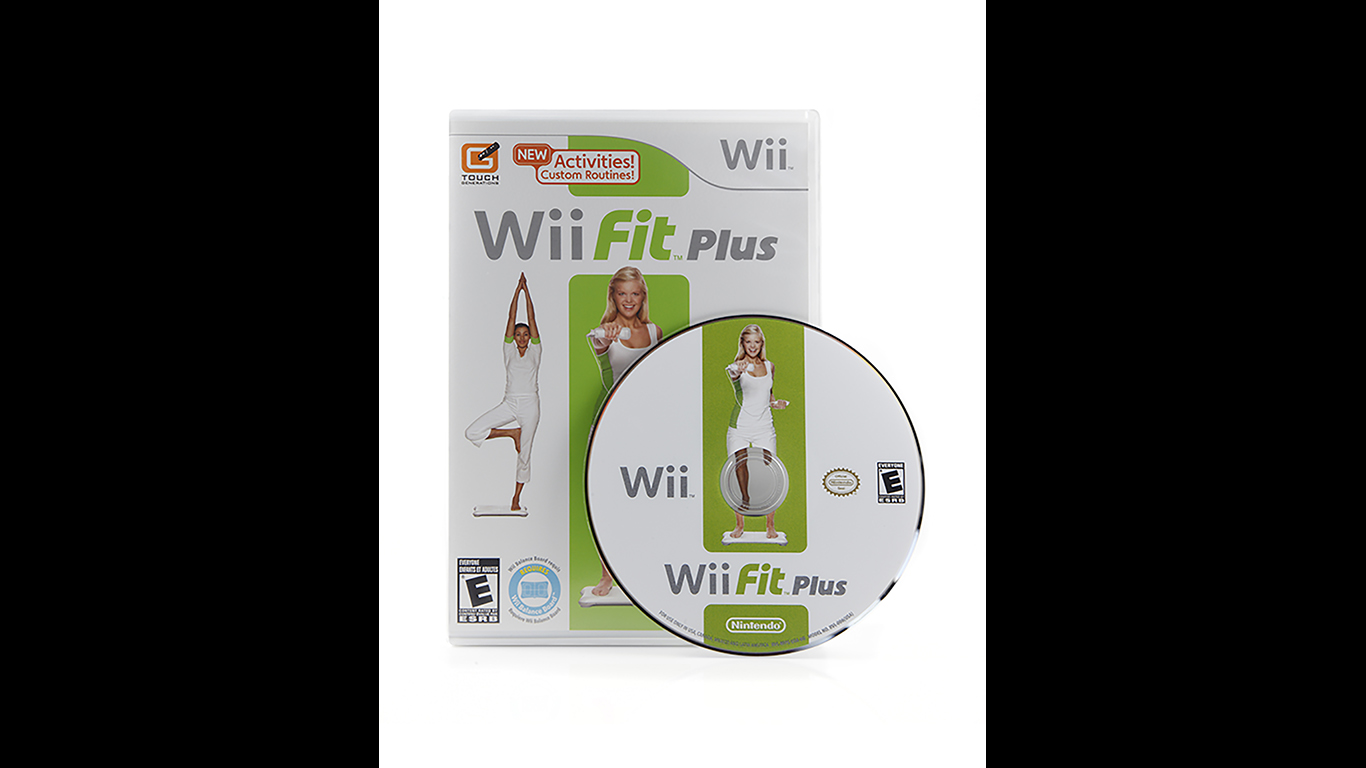
2008: Wii Fit
Video games may seem to be the opposite of working out, but Wii Fit combines gaming and exercising like never before. Users link a balance board with their Nintendo Wii console and play games that can help with strength training, balance, and endurance.
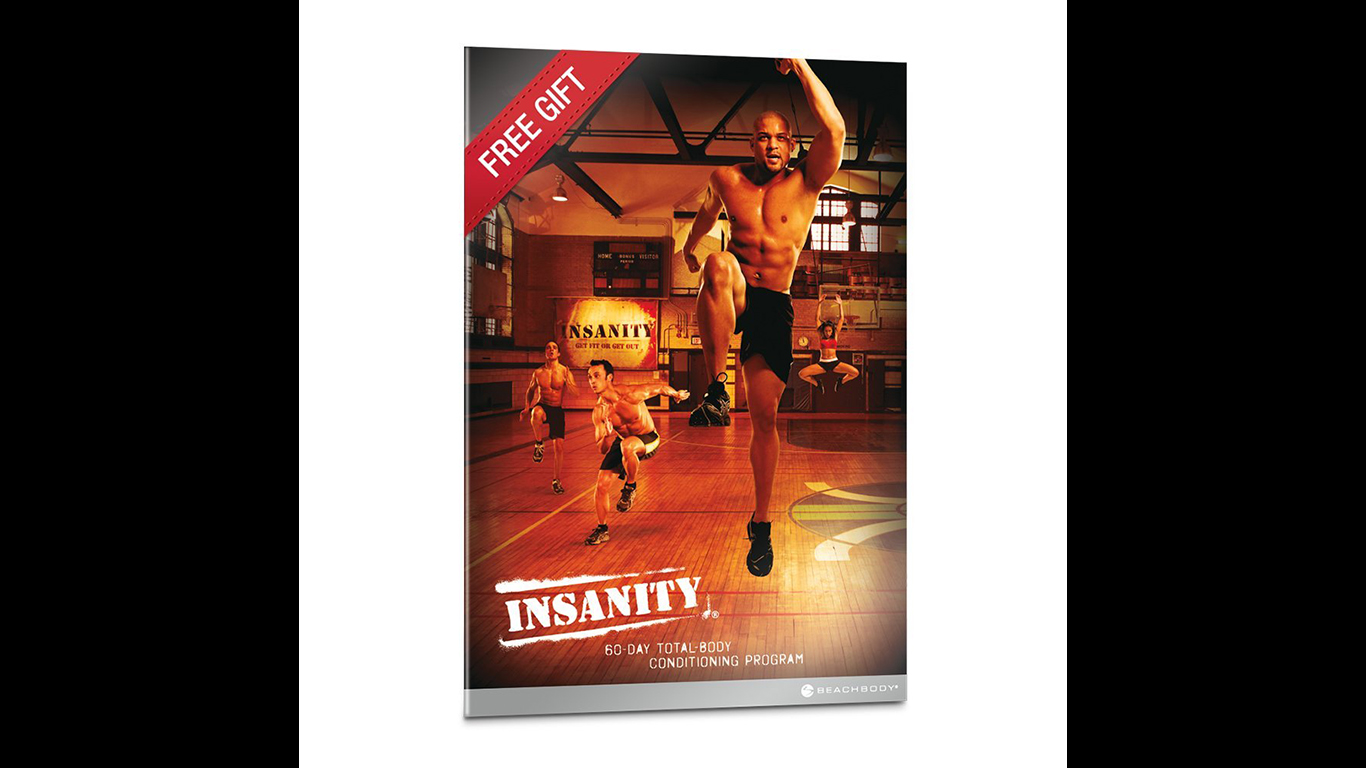
2009: Insanity
Insanity offers a home workout for people wanting to take their fitness routine up a few notches in terms of intensity. The infomercial-advertised video series says it can transform your body in two months without using any equipment.

2010: Shake Weight
The Shake Weight is a simple dumbbell that slides back and forth. It is designed to tone forearms and biceps. But it became so much more because of how silly and suggestive it looks. The Shake Weight’s infomercials were parodied on “Saturday Night Live” and “Ellen.”

2011: Boxing
With the rise of new lighter fitness fads like yoga and barre classes, many Americans wanted something more physical and intense. Boxing gyms saw a resurgence in the early 2010s. Training in the “sweet science” works the core, legs, and obviously the arms.

2012: Zumba
Zumba was once the top dance aerobics fitness fad in the country. In 2012, there were a reported 14 million people taking Zumba classes. The exercise style was invented by Alberto Perez when he forgot his usual music for an aerobics class and had to substitute a dance mix.
[in-text-ad-2]

2013: Spin Class
Decades after stationary bikes hit the consumer market, spin classes became a huge hit. Instructors play upbeat music and tell spinners when to ramp up and slow down their pedalling. Popular spin franchises like SoulCycle and FlyWheel have dozens of locations across major cities.

2014: Waist Trainer
Waist Trainers are a modern version of Victorian-era corsets. The trainers squeeze the wearer’s midsection, supposedly making it slimmer. The trend picked up steam after Kim Kardashian West used one, but they don’t actually seem to be effective. In fact, they can damage internal organs if used for too long.

2015: FitBit
FitBits may be the most high-tech fitness fad to date. The watch-like gadgets track the wearer’s sleep patterns, activity, and more. Other companies have tried to break into the fitness wearable market, but FitBit remains an industry leader, having sold over 67 million units.
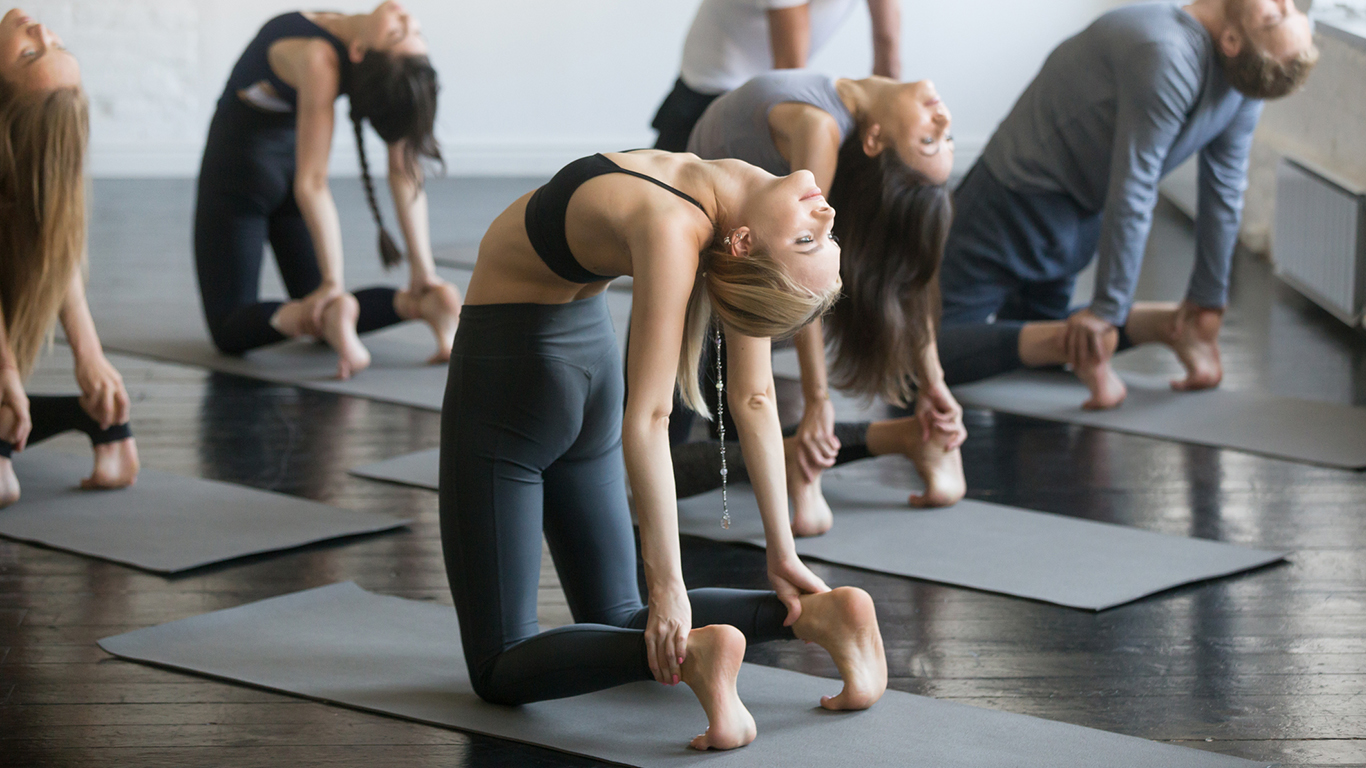
2016: Hot Yoga
After yoga became popular, some studios added a new wrinkle to the fitness practice — heat. Doing yoga in a sweltering room of 95 or more degrees supposedly aids with weight loss, though researchers have pushed back against that assertion. Yoga and hot yoga have essentially the same health benefits, but too much of the latter can overheat participants to dangerous levels.
[in-text-ad]

2017: CrossFit
CrossFit is a fitness routine that has inspired a dedicated following. It combines training and techniques from disciplines like weightlifting, running, and gymnastics. There are even CrossFit Games in which people from all over the world compete for the title of “fittest man or woman on earth.”

2018: High-Intensity Interval Training
The latest exercise fad in the U.S. is High-intensity Interval Training. Essentially, people work out with maximum effort for around a minute, then move to something that takes a bit less effort to recover. Proponents say the workout is a great way to get in an intense workout and burn lots of calories in a short amount of time.
Detailed Findings
America’s obsession with physical fitness may have started with President Dwight Eisenhower’s creation of the President’s Council on Youth Fitness in 1956. The program was created as a response to some alarming statistics relating to the physical strength of America’s youth. Specifically, some 60% of American children had failed a physical fitness test, compared to just 9% of European children.
The average amount of calories Americans consume on a daily basis has increased by hundreds over the past few decades, making it harder to stay in shape. While exercise is important, diet is the primary factor in weight gain or weight loss.
As American waistlines expanded, an array of products hit the market promising to be the best, fastest way to help people slim down. Many relied on celebrities who were already in shape or other so-called “fitness gurus” to sell. Upbeat hosts told people how to best work their bodies on television, then VHS tapes, and now on DVDs and online classes.
As technology advanced, many workouts became more high-tech. Americans quickly moved beyond barbells. Hula hoops were one of the first new fitness products to hit the market. Other machines like the treadmill, stationary bike, and NordicTrack took activities normally reserved for the outdoors and allowed consumers to get the same type of workout without leaving the home.
While there is no way to determine how many people were embracing an exercise fad in any given year, we attempted to match each fad with the year that it first appeared or the year it became one of the most popular ways for Americans to exercise.
Methodology
To determine the exercise fads the year you were born, 24/7 Tempo reviewed workouts or exercise trends that were created or became popular in each year between 1956 — the year President Eisenhower established the President’s Council on Youth Fitness — and 2018. We compiled a list of fads from various sources, including fitness magazines, newspaper articles, and online publications. The popularity of an exercise product or technique was determined based on the amount of promotion the fad received, either through advertisements or in the media.
Credit card companies are at war, handing out free rewards and benefits to win the best customers. A good cash back card can be worth thousands of dollars a year in free money, not to mention other perks like travel, insurance, and access to fancy lounges. See our top picks for the best credit cards today. You won’t want to miss some of these offers.
Flywheel Publishing has partnered with CardRatings for our coverage of credit card products. Flywheel Publishing and CardRatings may receive a commission from card issuers.
Thank you for reading! Have some feedback for us?
Contact the 24/7 Wall St. editorial team.